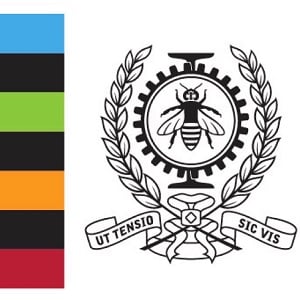Design optimization of multifunctional structures via embodied intelligence
Position Details (PhD Program)
Title
Design optimization of multifunctional structures via embodied intelligence
Motivation
In the effort towards a sustainable future, engineering systems will have to meet the most stringent requirements as well as respond and adapt to variable and harsh environmental conditions. A promising pathway to improve performance is to control mechanics via structural design at different length scales. This paradigm-shift of creating metamaterials (artificial structures whose properties depend on geometry rather than chemical composition) brings forward novel functionalities. However, the design of these systems still mostly relies on intuition and experience and is often based on a single targeted functionality. Similarly, numerical models and fabrication methods are developed for proof-of-concept demonstrations and omit crucial components (such as realistic material models, valid boundary conditions, scalable actuation methods, and mass manufacturability) to enable transfer to industrial applications.
Objectives
– Model the effect of geometry on the onset of mechanical instabilities, post-instability regime, and stable configurations in multifunctional structures
– Fabricate multifunctional structures with rapid, scalable, and sustainable manufacturing techniques
Tasks
The student will develop numerical tools (reduced-order models, kinematic models, FEM-based models) to simulate the response of multifunctional and multistable structures inspired by origami, kirigami, and soft robotics. These numerical models will guide the development of advanced manufacturing techniques at the small-scale (multi-material 3d-printing, multi-axis CNC machines) and the large-scale (2D laminate techniques via laser-cutting and digital cutting). The student will also build custom experimental set-ups to measure the strain, stress, and elastic energy of these structures during loading and at different stable configurations. These numerical and experimental data will ultimately be used in the design optimization of deployable structures that are able to create a protective environment.
Skills and outcomes
This project is multi-disciplinary and at the intersection of applied mathematics, mechanical engineering, architecture, design, and art. It will develop the student’s technical skills in modeling, simulation, programming, advanced manufacturing, design, and experiments. There will be the possibility to collaborate with top universities in the world, including Harvard University, King’s College London, and KU Leuven.
Requirements
Motivation for the research projects is the most important element. Anyone interested in the position is invited to apply. The projects are multidisciplinary and span different domains including engineering, applied sciences, computer science, architecture, design, and art. Members of under-represented groups are invited to apply. People with non-standard academic backgrounds are invited to apply and explain any extraordinary circumstances that might have negatively affected their studies.



 Polytechnique Montreal
Polytechnique Montreal